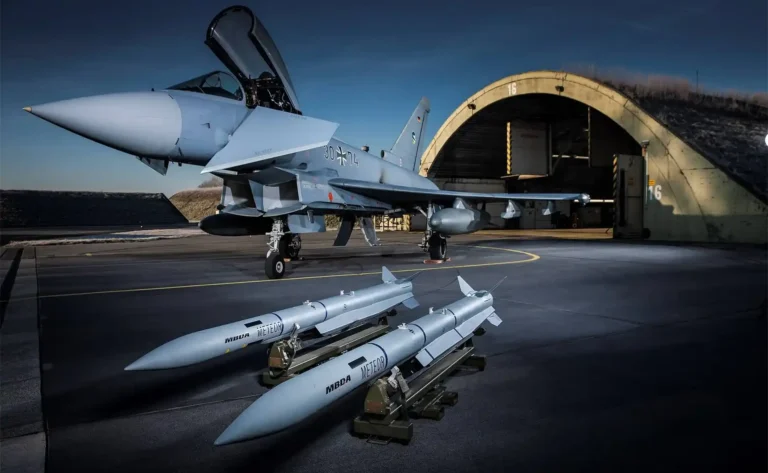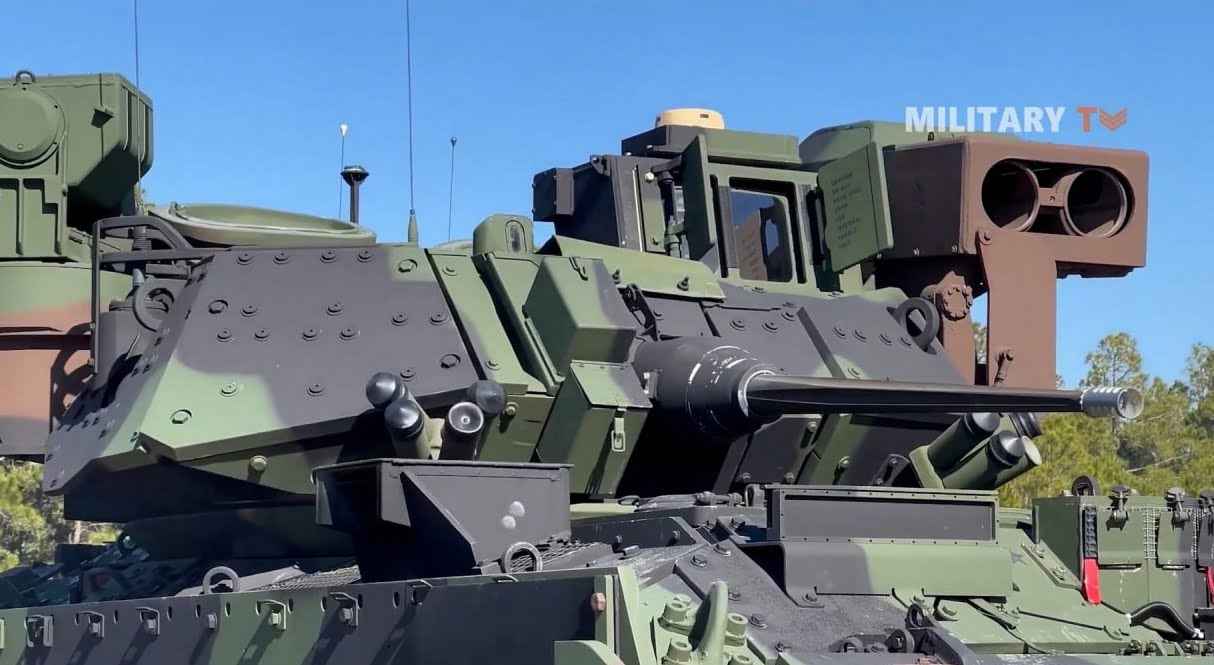Follow Us:

Share
Defense Feeds – In today’s we will discuss about the Bradley Fighting Vehicle, an armored combat vehicle that transports infantry into battle and provides direct fire support.
Designed with a combination of outstanding survivability, mobility, and lethality, meet one of the lightly armored fighting vehicle platforms in the United States, Bradley Fighting Vehicle.
Although this vehicle is lightly armored, it is known as a battle proven platform and has become a vital part of the U.S. Army brigade combat squad. So, how excellent is this vehicle and how does it work? If you’re curious about the answer, please see our review below.
Bradley Fighting Vehicle or BFV was named after the U.S. General Omar Bradley and was manufactured by BAE Systems Land & Armaments and in response to the Soviet BMP family of infantry fighting vehicles. It has been in frontline service since 1981 with the U.S. Army.

The Bradley was developed as a fully tracked transport vehicle that offers cross-country mobility, mounted weaponry, and protection against artillery and small-arms fire.
However, currently Saudi Arabia as well as Lebanon have also become the operators of this vehicle. There are 6,724 units of the vehicle in total that have been fielded since its first deployment.
It is used to transport troops into hostile territory with armor protection before and during combat while suppressing enemy positions with firepower.
Hence, this armored vehicle is beneficial as both a tank-killer and personnel carrier.
There are two main variants of the Bradley, the M2 infantry fighting vehicle and the M3 cavalry combat vehicle.
More specifically, the M2 has a role in carrying a three-person crew, which includes commander, gunner, and driver as well as six fully outfitted infantry men. Meanwhile, the M3 is mostly used for scout missions and carrying crew of three with two additional scout troopers.
Above all, both variants are employed to fight mechanized infantry and armored cavalry.
In general, the Bradley vehicle is amphibious and is powered by VTA-903T diesel engine from Cummins Engine Company of Colombus, Indiana. This engine produces 600 horsepower with range of up to 483km and provides a maximum speed of 66km/h on road and 7.2km/h in water.
In addition, with the length of 6.55 meters, the width of 3.61 meters, the height of 2.98 meters, and the total mass of 30.4 tones, this vehicle is also equipped with hydromechanical transmission of 500 hydromechanical power train from Combat Propulsion Systems.
Thus, the Bradley, which was developed to replace the M113 series of armored personnel carriers, is more powerful and faster than its predecessor.
In terms of weaponry, the Bradley fighting vehicle is mainly armed with 25 mm M242 Bushmaster chain gun in a two-man turret. This cannon features a single barrel with an incorporated into dual feed mechanism as well as remote feed selection, enabling it to fire up to 200 rounds per minute with accuracy of up to 2500 meters depending on the ammunition used either with single or multiple shot.
Further to this, the Bradley also carries the Raytheon BGM-71 TOW anti-tank missiles, providing about twice the effective range at a maximum of 3,750 meters, a more potent warhead, and a vastly enhanced semi-automatic guidance system that could also include infrared cameras for night-time use.
The twin-tube TOW launcher is mounted to the left side of the turret and can track target using an infrared signal detection from the back of the missile in flight through an optical sight. Beside those main armaments, this fighting vehicle is also equipped with the 7.62 mm M240C machine gun attached coaxially to the right of the Bushmaster with 2,200 rounds.
Along with this, the modified M-16 rifles is also mounted in shooting ports, which infantry can use to attack from inside of the Bradley, or they even can dismount from the M2 Bradley variant to fight on foot.
On the other hand, as an armored vehicle, the Bradley is also capable of protecting against 14.5 mm to 30 mm armor-piercing, thanks to its spaced laminate armor as well as explosive reactive armor (ERA).
The ERA is made up of 96 tiles mounted to the vehicle’s sides, turret, and front, making the Bradley effective in protecting the vehicle itself and the crew inside from a variety of anti-armor weapons and even rocket propelled grenades.
It is also important to note that, this vehicle is fitted with an engine smoke generating system and two M257 smoke grenade dischargers as a “self-protection” device, of which is loaded with four smoke grenades each. With such enormous power and great survivability, therefore, this amphibious vehicle is effective against most armored targets, including the hostile tanks.
Even in the Persian Gulf War of 1991, the Bradley has proven to be effective in destroying more enemy tanks than the M1 and M1A1 Abrams Main Battle Tank systems did.
Although the M2 and M3 variants of Bradley have successfully fulfilled the concept required of an excellent armored fighting vehicle, the improvements are still made to keep them as a very dependable and critical combat vehicle for the armies of the U.S. and the Saudi Arabia. One of the Bradley improvements is its armament.
In October 2019, Northrop Grumman at the AUSA defense exhibition and conference in Washington D.C., United States, revealed a new XM913 50 mm Bushmaster, a weapon designed to modernize the Bradley existing M242 25mm cannon.
This weapon was developed based on the proven Bushmaster III 35/50 design to provide greater capability against newer infantry fighting vehicle designs as well as counter-unmanned aerial systems.
It is essentially a more advanced version of the standard chain gun by combining Bushmaster chain gun durability with next-generation effective range, giving the soldiers an increased stand-off against enemies at a close distance. As a result, with this advance capability, the XM913 has twice the range of the Bradley former cannon and is able to attack target up to four kilometers away.
Furthermore, the 50mm cannon can integrate a number of new, high-tech armored vehicle attack technologies into a single weapon, including enhanced fire-control, automated targeting sensors, next-generation ammunition, and faster computer processing.
Another interesting thing to note is that according to Northrop Grumman spokesman Jarrod Krull, the development of XM913 50 mm was initially undertaken to support the U.S. Army’s Next-Generation Combat Vehicle (NGCV) replacing the Bradley vehicle family. Yet, the Bradley variants remain in service in the meantime.
Share
Defense Feeds is publication focusing on informing, engaging, and empowering the world by providing accurate information from defense technology.
Powered by Defense Feeds © 2025 – All rights reserved.